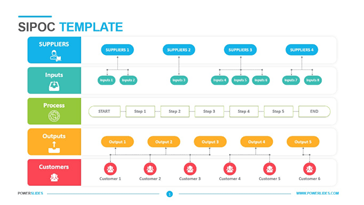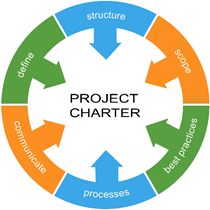Let's Start From the Very Beginning...

Do the necessary due diligence and get teams to the point where everyone is clear on the objective of the project with guardrails in place so that you are properly balancing a rapid agile environment without accidently running off the cliff.
The key to getting a clear picture of where we want to be, starts with where we are right now. The same is true when embarking on a business mandate, project, assignment or process improvement strategy. In the world of Lean Six Sigma (LSS) we call this the ‘Define’ phase.
Many argue that the ‘Define’ phase is the most critical step for achieving project success. However, it’s common that an inadequate amount of time and attention is spent on the ‘Define’ phase, since we often think we know what the issues are already and we’re anxious to solve the problem. Which isn’t to be criticized, however, a proper project definition will undoubtedly increase our likelihood for identifying and improving the key issues.
Therefore, over the next several months we will be sharing a series of blogs whereby we will break down the LSS DMAIC methodology; (Define, Measure, Analyze, Improve, Control) and highlight some of the important aspects of each of the phases. Today, we’re starting with Define phase and it’s vital role in a LSS project.
The Define Phase begins by asking crucial questions such as “what is the problem", "what impact does it currently have on our product and services, our productivity and performance, our costs, and most importantly our customers?” These questions help us to understand in broad terms which areas / methods / processes could be improved. However, we must not stop there and continue to outline and define our objectives and purpose for our project.
A quick google search will reveal in simple terms that 'Define', in a LSS context, is a statement of what our project is all about. More specifically we may think about it in terms of what’s needed ‘to improve the process’, ‘to produce a better widget, to understand the root cause, and so on.
The challenge remains that questions of this nature are still too broad and offer no parameters for the project, which often leads to scope creep and undesirable outcomes. As you know, scope creep can also cause time delays, and higher costs, exceeding the overall budget in people resources and financially.
So where does this leave us?
We suggest that you need to dedicate adequate attention to the Define phase. Do the necessary due diligence and get teams to the point where everyone is clear on the objective of the project with guardrails in place so that you are properly balancing a rapid agile environment without accidently running off the cliff.
This all begins with the Voice of the Customer (VOC). However, to complicate things further, we may need to first ask ‘Who is our customer? Are they happy or upset? What do they tell us, do we already know? Is our priority to ensure that our project objectives and outcomes result in a better customer experience? Are we aligned as a project team?’
We have discovered that the most effective way of getting to the true VOC and engaging thoughts and ideas from the broader team, is to use a variety of fact finding methods and techniques.
These techniques include:
- Surveys
- Interviews
- Focus groups
- Live chat
- Online reviews
- Emails
- Website behaviour
- Social media
- Net promoter score
Analyzing the results obtained from the VOC will confirm whether the project idea is aligned with the actual need as defined by our customer or whether our project objectives need to be shifted.
Next, we recommend conducting a SIPOC Diagram of our project. This tool will identify the relevant elements and provide insight into where we may be tempted with scope creep (hint: Inputs). Image source: https://powerslides.com/powerpoint-industry/apparel-retail-food-beverage-templates/sipoc-template/

Lastly we recommend preparing a Project Charter as the final element in the Define phase to guard against confirmation bias.
Image source: https://project-management.com/what-is-a-project-charter/

As stated at the beginning of this post, when embarking on a new project it is easy to make broad statements, reasoning that as you gain more information and discover insights into a project you can narrow the scope.
The reality is that more often than not, the opposite happens. Therefore, taking extra time to listen to the Voice of the Customer and creating SIPOC diagrams PRIOR to outlining the Project Charter will provide for a more focused objective and purpose.










